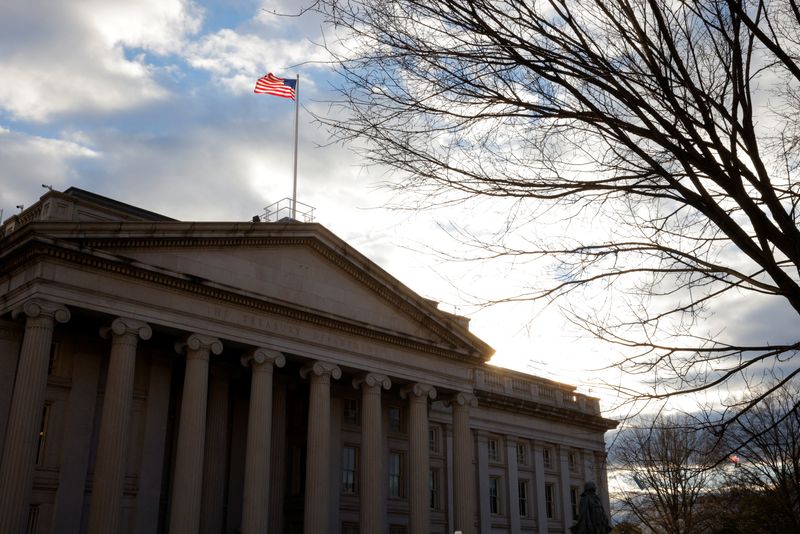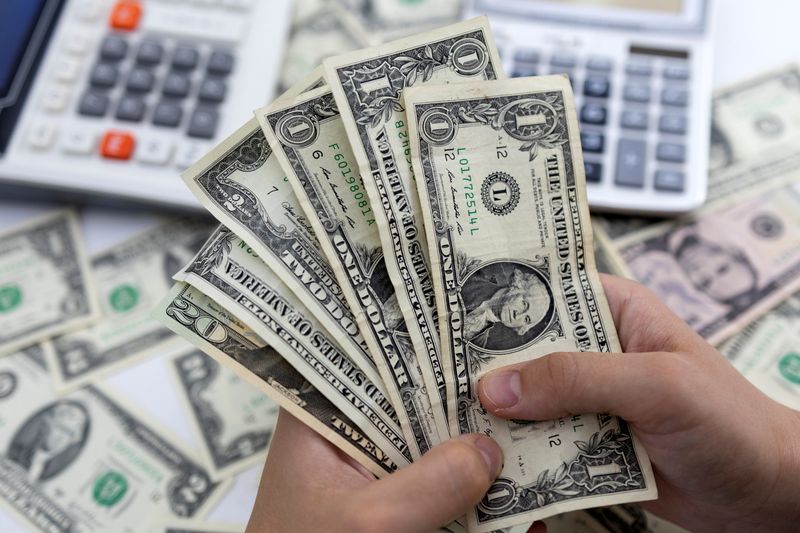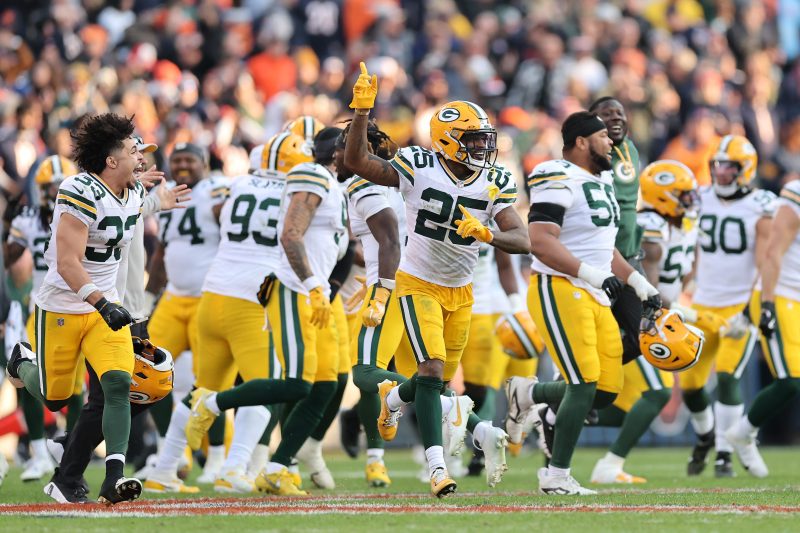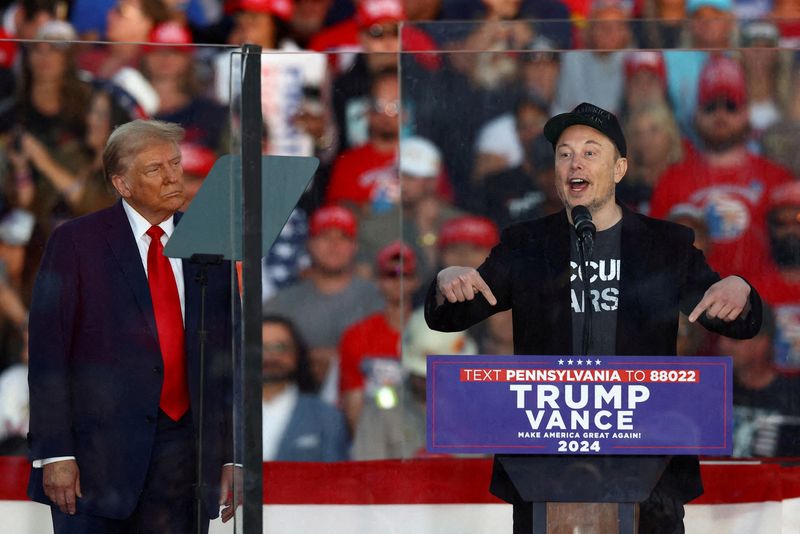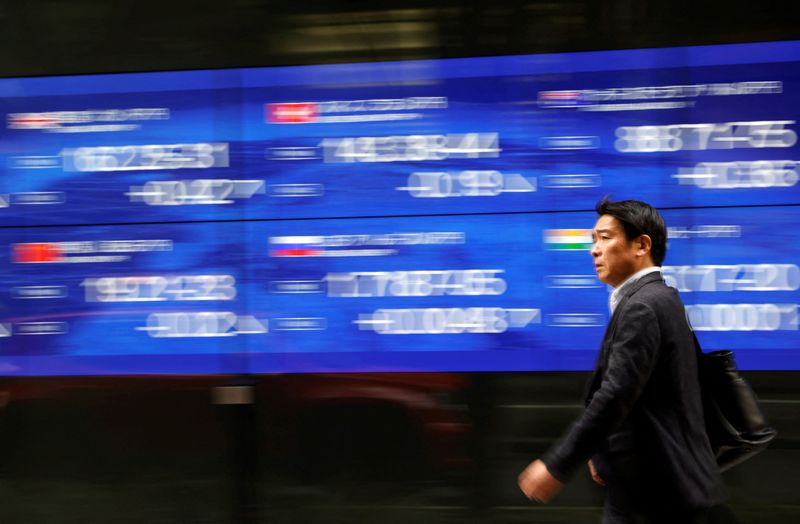Dollar sitting pretty, yen bears wary of BOJ hawks
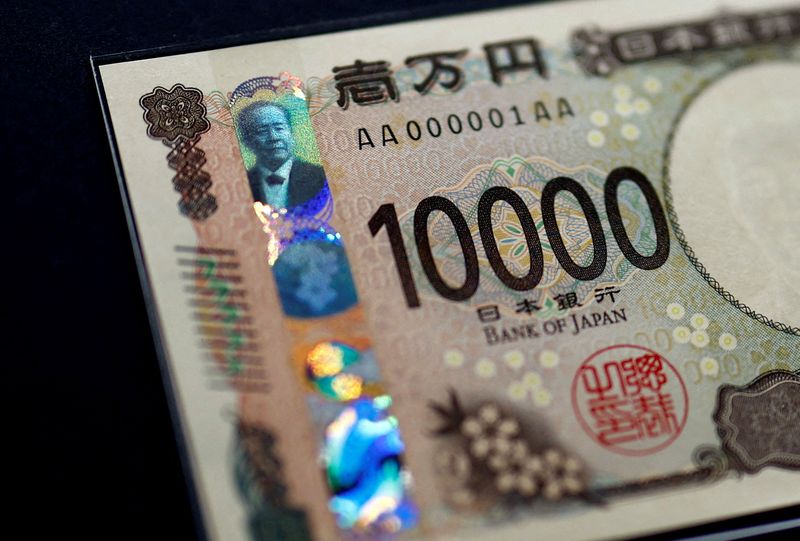
By Wayne Cole
SYDNEY (Reuters) – The dollar was looking to extend its bull run on Monday as lofty Treasury yields and a more restrained outlook for U.S. rate cuts burnished its attractiveness, though the risk of intervention had caused a pullback against the yen.
Yen bears were tense in case Bank of Japan Governor Kazuo Ueda used a speech later Monday to flag a possible rate hike in December, in part due to the weakness of the currency.
Ueda will deliver a speech at 0100 GMT, followed by a media conference at 0445-0515 GMT. It will be his first opportunity to speak directly on monetary policy since Donald Trump’s victory in the U.S. presidential election on Nov. 5.
Markets imply around a 55% chance of a quarter-point rate hike to 0.5% when the BOJ meets on Dec. 19.
Japanese Finance Minister Katsunobu Kato on Friday put the market on warning of possible intervention if the yen fell too far and fast, sending the dollar down 1.3% to 154.30 yen. Support now lies at 153.86, with resistance at last week’s peak of 156.76.
That pullback helped steady the euro for the moment at $1.0530, though that was still uncomfortably close to the recent one-year trough of $1.0496.
Against a basket of currencies the dollar held at 106.730, having touched a one-year top of 107.07 on Friday. The index climbed 1.6% over the week, marking six weeks of gains in the last seven.
The rally has coincided with a savage swing in 10-year Treasury yields, which have climbed 70 basis points since the start of October, fuelling a 5.4% rise in the U.S. dollar index.
PRICING US EXCEPTIONALISM
“While a period of consolidation looks likely in the near term, we have revised up our forecasts for the dollar and now project a further 5% appreciation by the end of 2025,” said Jonas Goltermann, deputy chief markets economist at Capital Economics.
“That is based primarily on a view that Trump will push ahead with the core tariff policies he proposed on the campaign trail and that the U.S. economy will continue to outperform its major peers.”
Markets are eager to hear who Trump will pick as Treasury Secretary, with Howard Lutnick, the CEO of Cantor Fitzgerald, and investor Scott Bessent top candidates for the job.
Analysts generally assume Trump’s touted policies of tariffs, reduced immigration and debt-funded tax cuts will be inflationary, so limiting the scope for further rate cuts by the Federal Reserve.
Futures imply a 60% chance of the Fed easing by a quarter-point in December and have only 77 basis points of cuts priced in by late 2025, compared with more than 100 a few weeks ago.
At least seven Fed officials are due to speak this week and traders assume they will sound cautious on aggressive cuts.
A horde of European Central Bankers are also speaking this week and could sound more dovish given recent soft economic data and the risk of tariffs hitting EU trade.
The data calendar for the U.S. is light this week, but the UK, Japan and Canada all have important inflation reports due, while manufacturing surveys out late in the week will offer a clue to how sentiment is faring post the U.S. election.
